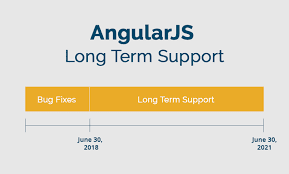The Core Concepts Of Angular
The Core Concepts Of Angular
Victor Savkin is the founding member of Angeli Consulting Group. It has been an old British portal for Google and has created an injection, a change in emotions, continuous forms and modules.
In this blog article, we will talk about three basic concepts of Angular 2: components, a connection of locks and kits.components
To open an open application 2, define elements of the element, the screen, and the route.
The uses are part of the root. Part of the filters has a television and a filter. TalkList is the list below that you see. And TalkCmp is on the list.If we want to understand that it is part of angle 2, let's talk with TalkCmp.
Input and Output Properties
The unit has creative and productive formats to describe the beauty of the section or the use of the properties.
a list of ways you can use your suggestion and yourself. You can define the template outside, using templateUrl, as in the previous example or sequence.Lifecycle
The units have a clear lifestyle that you can touch. The TalkCmp section can not join events in the life cycle, or perhaps elsewhere. For example, this section will be notified when the product is changed.Suppliers
Part of this may be in the list of providers that they and their children can be injected with.In this case, we have a backyard and a database that is registered in the boot sector, which makes them available during the application. Part of the following sections of real service. Given the reliability of the injection, we will work in detail in the second section of this article.
Host element
If you want to change the angle section of the DOM presentation, you should contact the DOM element in the corner. These are called invited elements.The DOM visitor can contact a party as follows:
• You can listen to your events.
• You can renew your homes.
• Can refer to the methods.
For example, listen to the events presented by the hosts, assess their prices and then store them in the garden. The angles make the DOM value of the action.
components are self-describing
What I said is an important part.• The section knows how to work with the host.
• The unit can find out how to do it.
• The unit is configuring dependence-dependency.
• This section has a well-defined API resource and an exit API.
All this is made up of parts of the explanation 2, so all the relevant information is necessary for its resolution. This is very important.
This means that everything can work as an application. You do not need to walk alone. In addition, you can stick to anything in the router section. Therefore, you can write part of the application as a request, resend it, or use the other party directly. The result is to teach a bit of API. We also produce recyclable parts.
What are the instructions?
If you know angular 1, you should ask: "What happened to the suggestions?"In fact, the directive is still English. This section is the most important type of directive, but not the only one. This section is an article that includes the product. But you can still write decorative guidelines without advice.
Dependency injection
Let's change the team and talk about the second base of an intersection of an angle.The concept of imbalance is simple. If you have a part of the service connected. You did not create this service. Instead, you apply for one of the designers and the style it will give you. This will allow you to connect with the pixels as specific types. This leads to many openings, which facilitates the fact and other great things.
single API
Both Angular 1 and Angular 2 are equipped with cellulite modules. But Angular 1 has several APIs to control congruence: some elements will be assigned a name. It's so frustrating. The angle 2 provides a considerable API injection. All were injected into the building.In this section, for example, TalksAppBackend and ElementRef, which is unique to each section.
Property Binding
The angles use the attached property to automatically attach the same tree structure and the DOM of the plants.working of modules built on top of development experiences. These include
· A module for the processing of forms or data entry.
· HTTP Client
· A powerful router.
· Animation support.
· A set of IM components that are called material components.
· Writing tools, e2e, and performance tests.
To getting expert-level training for Angularjs Training in your location-Angularjs training in Chennai| Angularjs training in Chennai | Angularjs training in Chennai | Angularjs training in Velachery | Angularjs training in Tambaram | Angularjs training in sholinganallur | Angularjs training in Annanagar | Angularjs training in Bangalore | Angularjs training in Bangalore | Angularjs training in btm | Angularjs training in marathahalli | Angularjs training in electronic city Angularjs training in pune| for getting online training Angularjs online training| Angularjs training in USA





Appreciating the persistence you put into your blog and detailed information you provide
ReplyDeleteTableau Training in Bangalore
DevOps Training in Bangalore
Tableau Training in Chennai
Tableau Training in Bangalore
ReplyDeleteIt’s great to come across a blog every once in a while that isn’t the same out of date rehashed material.
Data science Course Training in Chennai |Best Data Science Training Institute in Chennai
Nice core concept of angular.
ReplyDeleteBlue Prism Training in Chennai | Blue Prism Training Center in Chennai